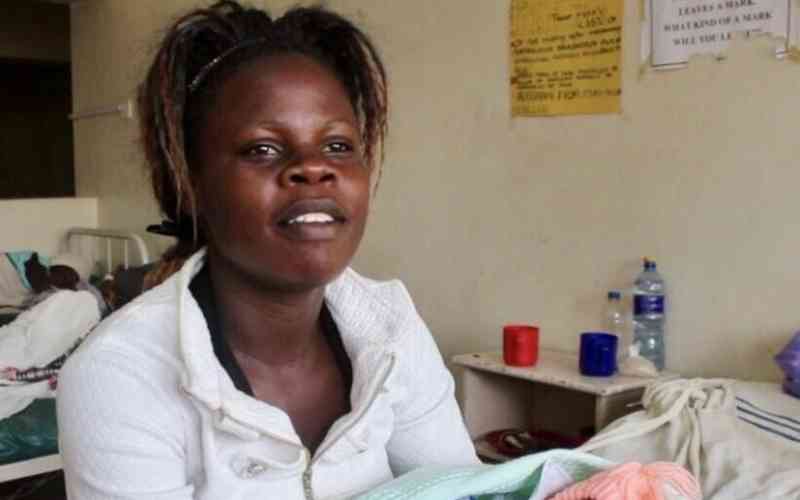
The provision of free delivery services now lies in the balance, after the Ministry of Health slashed budgetary allocation by half.
Free deliveries are currently provided for under the Linda Mama initiative under the defunct National Health Insurance Fund (NHIF).
In the 2024/25 budget estimates, the allocation for free delivery has been cut by half, from Sh4 billion to Sh2 billion.
The cut in the budget triggered a heated debate between officials from the Ministry of Health and the National Assembly Committee on Health.
Furious legislators pushed for answers on why there was a slash on the free maternity programme despite high demand of deliveries in the country.
Appearing before the committee during deliberation of health budget estimates, Director of Health Financing at Ministry of Health, Dr Elizabeth Wangia, said only indigent women will be considered for free delivery under the new health scheme- Social Health Authority (SHA).
Wangia explained to the Robert Pukose-led committee that all schems under SHA will be collapsed.
“As much as Linda Mama will be a stand-alone fund, we will identify pregnant women as provided in the act. If indigent, they should be assisted to get service,” said Wangia.
- MPs want Nakhumicha sacked over Linda Mama programme
- MPs call for suspension of Kenyans registration into SHIF
- Thorny path to UHC: Kenya's struggle with inclusion and promise of digital accessibility
- State accelerates digital transformation of healthcare
Keep Reading
“Just like any other indigent, means testing is done, and a pregnant mother is considered an indigent, so she will be covered,” she said, adding, “We shall be covering the indigent pregnant,” Wangia told the committee.
She added, “People who will be covered are indigents who will automatically go up based on deductions on the premium”.
In the new scheme, unlike the repealed National Health Fund, mothers will have a premium paid for together with their households under the new scheme.
“For Linda Mama, it was actually a payment based on service. If a mother sought care, and wanted to deliver, delivery was paid for, antenatal care was paid for, but then, her household was not covered for”.
Nandi Woman Representative, Cythia Muge, demanded to know on why the allocation has been slashed.
As per Health data, at least 6,000 to 8,000 women die every year during delivery. Accordijng to Muge, the scrapping of Linda mama initiative might cause more deaths.
Kenya also records at least 21 neonatal mortalities per 100,000 live births.
Dr James Nyikal, himself a former Director of Public Health, regretted the ministry’s move, saying the country might end up having more deaths at birth.
“From my observation, there is a gap. Someone must sit down and get solutions. If women are not getting Linda Mama, transition process will result into deaths,” said Dr Nyikal.
Nyeri Town MP Duncan Mathenge added that there is need of clarity from the ministry on state of Linda Mama.
“According to Act, it is mandatory for everybody to be registered including when a newborn should be registered. I am assuming at point of registration, comes a classification…There is an overlap. Where's the new indigent women coming from? The system should include everybody.”
Linda Mama was initiated in 2016 under NHIF, by the former President Uhuru Kenyatta with the aim of reducing maternal and infant mortality.
Since its introduction, the number of women delivering in hospitals has increased, so has the number of CS deliveries, which have more than doubled
As per ministry of health data, 948,000 deliveries were registered across the country, numbers that increased to 1.19 million in 2019.
Before the introduction of free hospital delivery, majority of women used to seek help from traditional birth attendants, an issue that contributed to high maternal and infant deaths.
For example, in 2008/9, Kenya’s maternal deaths stood at 488 per 100,000 lives, according to Kenya Demographic and Health Survey, a number that has since reduced to 342 per 100,000 lives in 2022.
KDHS report of 2022 revealed that the number of babies dying at birth in Kenya has sharply reduced in the past five years.
The under-five deaths have also plunged from 52 per 1,000 live births to 41 deaths.
Cases of children dying between birth and their first birthday (infant mortality), have also reduced from 39 deaths per 1,000 lives recorded in 2014 to 32.
 The Standard Group Plc is a multi-media organization with investments in media platforms spanning newspaper print
operations, television, radio broadcasting, digital and online services. The Standard Group is recognized as a
leading multi-media house in Kenya with a key influence in matters of national and international interest.
The Standard Group Plc is a multi-media organization with investments in media platforms spanning newspaper print
operations, television, radio broadcasting, digital and online services. The Standard Group is recognized as a
leading multi-media house in Kenya with a key influence in matters of national and international interest.











